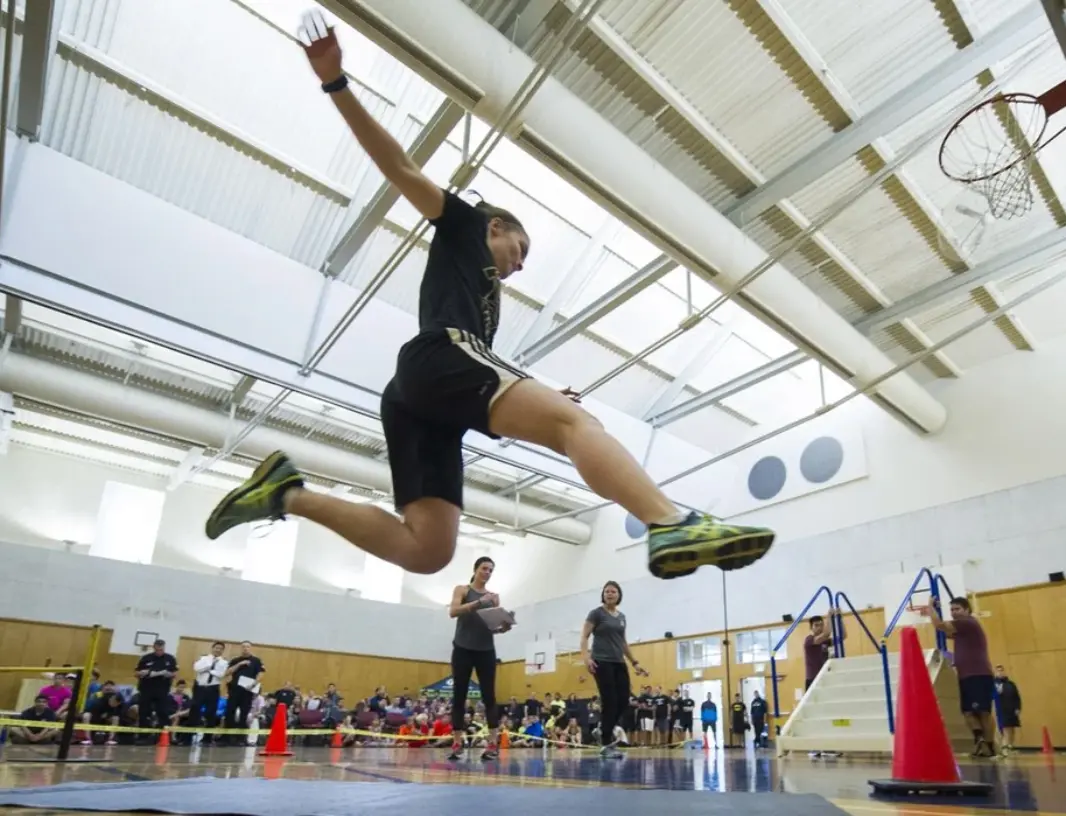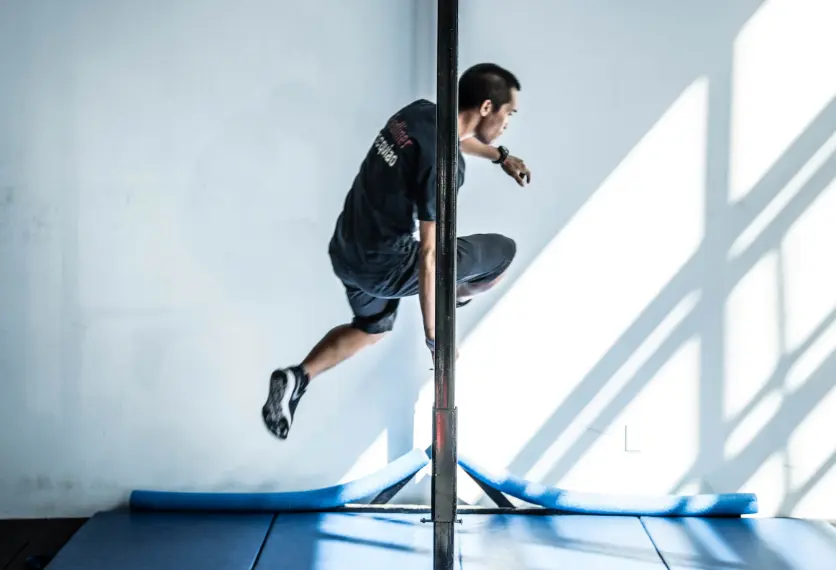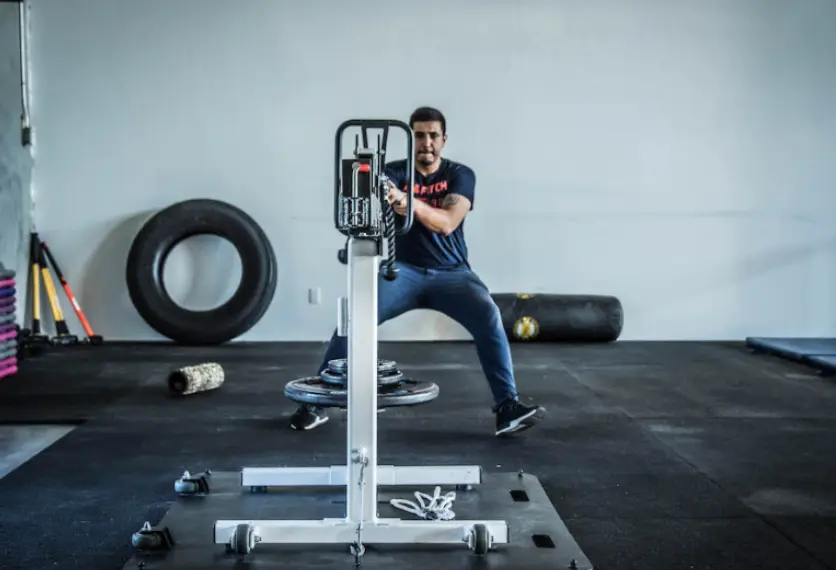As the managing director of a company, anEDGE, that coaches and mentors applicants through the RCMP and Municipal Police application process, some of the many questions I get around the physical tests during the application process are:
- What is the Police Officer Physical Abilities Test (POPAT)
- How many components or sections are in the (POPAT) Test
- How long do I have to complete the POPAT test?
- Which departments use the POPAT test?
- Is the POPAT Test challenging?
Remember, all RCMP, Provincial and Municipal Police departments, Transit Police and Canadian Border services have some form of fitness component to their Law Enforcement application process.
This article will focus on the POPAT test, used mainly by Canadian provincial and municipal Police departments and Transit Police. However, other law enforcement departments, such as the RCMP, use a few other very similar tests.

What is the Police Officer Physical Abilities Test (POPAT)?
The POPAT, or Police Officer Physical Abilities Test, simulates a critical incident where officers pursue, control, and apprehend suspects.
It comprises various elements, such as obstacles, jumps, cones, agility bars, an eighty-pound push-pull exercise, and a one-hundred-pound bag carry.
Both male and female applicants must complete it in under 4 minutes and 15 seconds, emphasizing the importance of physical fitness.
Preparation, both physically and mentally, is crucial for success. While the minimum completion time is set at 4 minutes and 15 seconds, achieving the best possible time is vital due to the competitive nature of the selection process.
Practice the POPAT beforehand to familiarize yourself with the test’s requirements, rules, and protocols.
Private companies offer practice tests for the POPAT, which can be found through online search engines like Google.
How many components or sections are in the (POPAT) Test?
Part 1 – Agility Run (400m) – (POPAT) Police Officers Physical Abilities Test:
This segment marks the initial timed phase of the test, commencing when you depart from the starting marker. Your task is to complete six laps around the circuit, totaling 400 meters.
Beginning from the starting tower, you navigate around the next pylon and traverse diagonally toward a six-foot-long mat positioned at the course’s center. It’s optimal to clear this mat with a jump and promptly maneuver to the next corner.
Should you fail to make the jump, you’ll be instructed to retry until successful.
Proceed to sprint towards the stairs, ascending them by ensuring contact with at least one step on the ascent and descent. Once atop, circle the tower at the course’s far end, then repeat the stair climb in the opposite direction.
Continue onward around the subsequent tower, leaping over both obstacle sticks. Knocking down a stick necessitates replacing it before jumping, and you must repeat this until you are successful.
After clearing both hurdles, circle the subsequent tower and return to the starting pylon. Upon completing the sixth lap, proceed to the Pull & Push Station.
Part 2 – Pull/Push Station – (POPAT) Police Officers Physical Abilities Test:
At the pull/push machine station, you must perform six 180° arcs while pulling the handle and six arcs while pushing in any sequence.
The weight must remain lifted throughout, and any drop resets the count to zero.
To begin, grip the push handles to elevate the weight from its base and traverse through the arc, ensuring your outside foot touches the designated line. Each touch corresponds to one arc; seize the rope and draw the weight away from its base for the pulling motion.
Part 3 – Vault Station – (POPAT) Police Officers Physical Abilities Test:
The vault bar and mat set up a variation of a squat-thrust-and-stand exercise succeeded by vaulting over a 3-foot (91cm) rail. Each vault necessitates touching the mat either on your back or chest. Completing nine vaults, you must execute five touches on the chest and five on the back and shoulders. Vaults must include at least one hand maintaining contact with the rail, and the rail cannot aid in standing up. The timed segment concludes upon rising from the tenth touch to the mat, with an optional heart rate measurement and blood pressure.
Part 4 – Weight Carry – (POPAT) Police Officers Physical Abilities Test:
This section is not timed, but it should be completed promptly after finishing the timed portion of the test. Your task is to lift a 100-pound bag, carry it under control for 25 feet, and safely place it down. Typically, you’ll be instructed to pick up the bag, circle a pylon positioned 12.5 feet away, and then return it to its original position.
If this is your first time seeing a POPAT, I encourage you to search online videos to understand the test.

How long do I have to complete the (POPAT) Police Officers Physical Abilities Test:
The POPAT is crafted to assess if a candidate possesses the essential physical capabilities for police duties, disregarding age or gender. Each participant must adhere to the specified protocol and complete the test within 4 minutes and 15 seconds. Additionally, they must carry a 100-pound (45 kg) weight across a 50-foot (15.24 meters) distance.
Which departments use the (POPAT) Police Officers Physical Abilities Test:
Law enforcement agencies throughout Canada employ various Physical Abilities Tests (PATs) to assess candidates. Please do a Google search on your particular department.
While many tests share similarities and utilize similar equipment, some are more rigorous.
Regardless of the specific test you undergo, readiness and fitness are essential for a career in law enforcement.
Canadian Municipalities:
Across Canada, municipalities employ the Police Officer Physical Abilities Test (POPAT) for candidate evaluation. The POPAT, lasting 4 minutes and 15 seconds, involves a 6-lap Agility Course, a Pull/Push station, a Vault section, and a sandbag carry. Similar to the BC Sheriff Service, some municipalities may include a timed run following the completion of the POPAT.
RCMP:
The Royal Canadian Mounted Police (RCMP) employs the Physical Ability Readiness Evaluation (PARE) to assess its candidates. The PARE entails a 4-minute-45-second assessment comprising a 6-lap Agility Course featuring stairs, a 5-foot jump, hurdles, and a vault. A Push/Pull station and a sandbag carry follow this.
BC Sheriffs Service:
The BC Sheriff Service employs the Sheriff Officer Physical Ability Test (SOPAT), a 4-minute-15-second assessment. It comprises a 6-lap Agility Course, a Pull/Push station, a Vault section, and a sandbag carry.
A timed run may also be required in certain municipalities after completing the SOPAT.
Corrections Service Canada (CSC)
Corrections Service Canada (CSC) administers the Correctional Officer Physical Ability Test (COPAT), which lasts 2 minutes and 50 seconds. It includes a Stair Run, Agility Course, Push/Pull task, Vault station, and sandbag carry.
Is the POPAT Test challenging?
Yes, The POPAT test is challenging; candidates must possess physical fitness to undergo it successfully. It is strongly advised that all candidates prepare themselves physically and mentally. While the minimum requirement stands at 4 minutes and 15 seconds, this phase of the selection process is intensely competitive, emphasizing the need to aim for the optimal performance time.
All that is left is to wish you success. Prepare yourself well if you are in British Columbia. Redline Conditioning is a well-respected, recognized training and evaluating facility, but a simple Google search will give you providers in your area.

